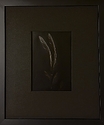You have Tri-X film, rated on the box at ISO 400. You want to shoot it at ISO 1600. That's two stop increase.
You need to develop your film longer. If you are pushing two stops, then increase the development time approximately 2.25 times your normal time. If your normal develop time is 10 minutes, then develop 23 minutes. If your normal develop time is 5 minutes, then develop 11 minutes. These are estimates - not exact, but they should work.
The shots will be OK, but not good. You can tell if the lens is working. The negatives will have higher contrast than ordinary, but you can print them on grade 1 or grade 0. If you scan them you can adjust contrast in the software.
If you want to shoot 1600 often you must experiment to find good development times for your circumstance. If you want to test the lens just once this will give you a usable image to see.
MB
Preflashing can push the toe and bottom of the curve up and back, when push processing.
Latensification can also help significantly with the shadow information.
One is a chore in the taking situation, but can be done selectively.
The other is something that has to be done before development, and is only practical to do globally on the whole roll.
With care, thought and experience it is possible to combine the two, as they are not really the same mechanism.
I’ve often wondered if you could pre-develop the highlights, latensify and then develop the shadows. But never tried it.
Hydrogen hypering can also buy you a stop or so at normal speeds.
The good news is that you don’t need a hypering chamber for normal speeds.
Vacuum chambering and subsequently pressuring the hydrogen crushes the halide crystals, due to the gelatine de-moisturizing and shrinking with microscopic but tremendous force. Fine for LIRF compensation. But destructive at normal speeds.
Ordinary hydrogen at atmospheric pressure and temperatures is best.
You just need to let the film sit for a day or two in an airtight container.
Combining all three should be possible, but the people who have done it in a film astro photography context, reports quite low contrast, but that might not be a problem when push processing.
1600 at close to normal image quality is not impossible.
The most easy and straight forward method to shoot in low light is of course flash. It is also a very daunting and often negatively perceived method by most beginners and even some experienced ones.
Learning how to use flash with bouncing, gels (for colour mostly, but also useful in B&W), diffusers and most importantly remote triggers, is not easy or inexpensive, but very, very useful.










